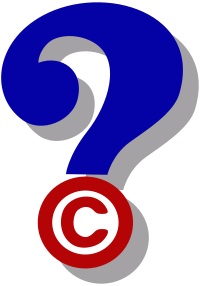I hear that in patent law, there’s a new worry about “Mayo”. What’s up? Did someone leave it out of the fridge? Did it spoil? Did folks get sick?
Signed,
The Entire Pharmaceutical Industry
Dear Industry:
The “Mayo” you heard about has spoiled a lot of things, and is likely to cause a lot of sick people not to get better in the long run, but it’s not in a jar. It’s a case decided by the Supreme Court (Mayo Collaborative Servs. v. Prometheus Labs., Inc.) about how you figure out if an invention is patentable – not if it’s novel and unobvious – but the threshold question of whether you can even patent it in the first place. That case is used along with Alice (remember Alice? There’s a song about Alice…Alice Corp. Pty. Ltd. v. CLS Bank Int’l) to analyze patents. These cases set out two steps that courts must take to address patent eligibility: First, determine if a “law of nature, natural phenomenon, or abstract idea” is involved. Then, find out if the invention adds, “something more” that makes the invention a patentable application of the law of nature, natural phenomenon, or abstract idea. Confused? Maybe that is because every court that has considered this question has essentially said to inventors, show us your invention, and if it contains “something extra” then we, judges (who are, for the most part, not scientists, engineers, physicians, etc.) will know it when we see it.
In the recent case of Endo Pharmaceuticals Inc. v. Actavis Inc. (D. Del. 2015), Judge Andrews considered a patent for treating pain in patients with kidney impairment (who might overdose on pain medications because they can’t clear the drug from their bloodstreams as quickly as someone with normal renal function.) The patent required using a time-release form of oxymorphone, measuring the level of renal impairment using a blood test, and adjusting the dose of pain medication downward as the level of impairment increased.
Judge Andrews first found that increased levels of pain medication in the blood of kidney patients was a “natural law”. He then reviewed the patent claim, which required providing the time-release drug, measuring the level of renal impairment, and administering the correct amount of the drug as determined from the measured impairment. He said, the administering step, “merely instructs physicians to dispense oxymorphone for the treatment of pain in a well-know[n] manner, while utilizing the natural law to manage the dosage,” adding that “the ‘737 Patent recognizes the use of oxymorphone for pain relief is a well-understood activity.” Judge Andrews concluded, “the steps in combination do not transform the natural law into a patentable application of that law.”
Judge Andrews may have been correct, but by saying that the invention was not eligible for patent protection, rather than simply that it was not novel, or obvious in view of the prior art, this analysis makes knowing what inventions are patentable much more difficult and uncertain. The Mayo/Alice test is being used all over the country to invalidate patents. The Doc has obtained patents on medical inventions, computer-implemented systems, and business methods for his clients for over 30 years, and it’s safe to say that many of those patents would be invalidated under these new decisions, even though they passed the novelty and obviousness tests for patentability with flying colors.
What drug, you may ask, does not involve a “law of nature” (it’s well known that if you give a person chemical X, then her body responds by doing Y)? That is a question that courts, and the entire pharmaceutical industry will have to address in the coming years.
The Doc knows that a lot of litigation will result from this, so it’s now more important than ever to file patents as soon as a drug is discovered, so that this law of nature may be treated as a valuable discovery. After all, the US Constitution, at Art. I, Sec. 8, Cl. 8 says, “To promote the progress of science and useful arts, by securing for limited times to authors and inventors the exclusive right to their respective writings and discoveries.” Maybe, just maybe, thinks the Doc, the Supreme Court should decide to revisit these issues, and see that inventors make discoveries, and that sometimes, what judges think is a “law of nature or natural phenomenon” is an important (yes, patentable) discovery too.
Have an invention that should be protected by a patent? See the attorneys at LW&H (and do it quickly) so that they may help you to protect your discoveries. Until next year…
The “Doc”
— Lawrence A. Husick, Esq.


